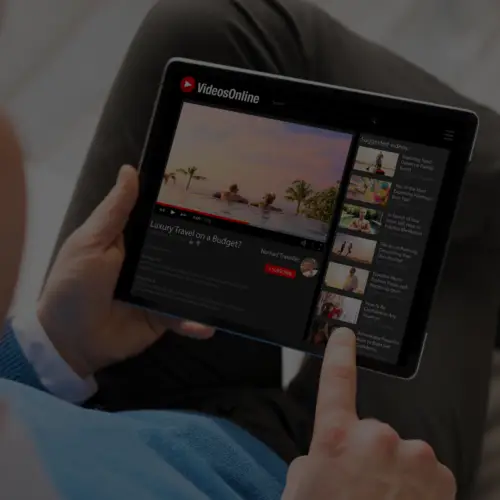10 Apr Before You Target Social Network Users Consider These 4 Points
 Few businesses these days could dispute the importance of social media as part of the modern marketing mix. Everybody and their dog knows you should be using social media to engage with your customers, gain market insight and hopefully even drive sales and revenue.
Few businesses these days could dispute the importance of social media as part of the modern marketing mix. Everybody and their dog knows you should be using social media to engage with your customers, gain market insight and hopefully even drive sales and revenue.
The problem isn’t determining whether to use social media, the problem is figuring out how.
The Problem
Facebook, YouTube, Twitter, Blogs, Pinterest, Orkut, Instagram… the list of potential social networks and communities that your business could be tapping into goes on and on. So how exactly do you figure out which ones to use? Too many businesses think the best strategy is to be active on as many as possible, but this can be a recipe for disaster.
And it’s not just about finding the channel that is host to the greatest volume of relevant people within your target market either (though this is also an important step) – there are other important considerations you need to have before you dive in.
The Solution
I’ve come up with what I see as the four main steps, or rather questions you should ask yourself, before making your final decision as to what social media channels you should be using to reach your target audience.
1. Who Is Your Target Audience and Where Are They?
Identify Your Target Market on Social Media
First of all you need to have a clear understanding of who exactly you’re looking to reach (i.e., your target market). Hopefully you have a pretty good idea about this already (if you don’t, I’d be a little worried!) – but one quick caveat here: check that your general target audience matches your social media audience.
What I mean by this is, sometimes you might have a product that is meant for women aged 15-55; however, if you look at your current Facebook insights, the majority of your fan base may be women aged between 25-35. Or in some cases it may be totally different. For example you may have a product/service that is relevant to just about all adults, but you find that the key demographic engaging with you on Twitter is workers between the ages of 30 and 45 (skewed to males) and also students.
The key is to figure out not just who your target audience is, but who are the most likely to engage with you on social media.
Which Social Media Channel Does Your Target Market Frequently Use?
Once you figure out who you want to be targeting, you need to figure out where these people are. This one is not hard to do in today’s age of infinite information at your fingertips. All you need to do is spend a good few minutes on Google and you should be able to establish the right demographic data for each of the channels you’re considering.

For example, Heidi Cohen provides a good overview of some social media user data in this article – she explains that just over half of Twitter users are 35 or older, and almost 80% of LinkedIn users are 35 or older. Facebook and Twitter are skewed towards females at just 40% male and almost 80% of Pinterest users are female. There are plenty of other resources, studies and articles that can provide you with detailed demographic data relating to social media sites if you take the time to look.
Identify the Key Influencers Within Your Industry
You may not have your own communities established, so it may be worth your while looking for key influencers within specific demographics or industries. There are plenty of tools that can help you with this, for example Little Bird, TopsyPro or SocialBro (all of which I’ve written about in previous articles – click hyperlink to read!).
You can then target these influencers and even try to form a partnership so that you can access their communities, which is pretty awesome because it saves you lots of time and work.
Take Advantage of Targeting Options Provided by Social Media Channels
Certain social media sites take the hard work out of trying to find your target audience by providing you with specific niche targeting options via advertising (and sometimes even posting) functionality.
Facebook is the obvious one here with their endless array of targeting options for advertising (seriously, it’s unrivalled), but LinkedIn, Twitter and other sites also offer some pretty decent options. This way you can be sure you’re reaching your core target audience, without any waste. Of course, it will also cost you a pretty penny.
When Is Your Target Market Most Active On Social Media?
Last of all, try to gain some insight into when your target audience is most active within social media channels – do you find that they engage most on Fridays, or Tuesday mornings or on the weekends? Is there a peak time of year (tax time, Christmas, Summer etc)? Keep in mind the best times and try to aim your biggest campaigns for these busy periods.
2. What Are You Looking to Achieve?
Once you figure out who you want to reach, and where they are, you need to think about what you’re actually trying to accomplish.
Do you want to build a community? Provide top notch customer service? Run an advertising campaign? Are you looking for exposure to a new product launch, or purely drive sales/revenue?
Certain social media channels are better or worse at each of these, so it’s not necessarily enough to find your audience and use those key channels. It’s also important to keep in mind what you’re hoping to achieve. You might have a huge proportion of your key target audience on Twitter; however, it’s not necessarily going to be the best place for you to run a direct sales campaign.
Figure out what your key objectives are, and evaluate each channel based on their abilities to achieve these.
3. How Is Your Messaging Best Conveyed?
This is something you should know off the top of your head – your product/service/brand (whatever you’re trying to promote). Some questions to ask:
- How is it best merchandized?
- What is the best way to get your message across? Is it through
- Imagery (think Pinterest, Instagram, Facebook?)
- Video (YouTube, Facebook, blogs)
- Surveys (LinkedIn, Facebook)
- Straight copy (blogs, Facebook, Twitter)
- Samples (Facebook)
- Short tips / jokes / messages (Twitter)?
- Or do you want to just drive people to a retail store and convert them there (Facebook, Foursquare, Gowalla, Yelp)?
Social networking in this day and age provides marketers with a wealth of opportunity in terms of marketing options – you might even decide the best campaign is an offline event that prompts people to talk about it on social media. Figure out the best way to promote your message and then work out the best social media strategy to align with that – not the other way around.
You might have every single one of your target audience on Facebook, but if you don’t have the right messaging to get their attention on there, it’s not going to make a difference.
4. What Do Your Budget/Resources Look Like?
It’s all very well to establish that you want to run an awareness advertising campaign, that your product is best represented via video and that all your audience are hanging out on YouTube all day, but that doesn’t mean you have the funds to run an all-out YouTube campaign. It’s expensive (trust me).
So once you answer these other questions you need to re-evaluate your options based on:
- How much money you have.
- How much time (or what human resources) you have.
If you want to build a community and improve your engagement by offering 24/7 customer service on Twitter, you’re going to need the right number of people (depending on your volume) to ensure you can be responsive. If you want to run a direct-response sales campaign via Facebook ads, you’ll need a budget for this. It’s common sense.
So there you have it – four key questions to ask yourself in order to determine the best social media channels within which to engage your key target audience. It’s not always about the greatest volume of people, but also about considering your key objectives, how your brand messaging is best conveyed and what your budget and resources look like.






